Serendip is an independent site partnering with faculty at multiple colleges and universities around the world. Happy exploring!
A Collaborative Outline for the Bi-Co Teaching Assistant (TA) Handbook
Empowering Learners: Spring 2010
Field Group Project Part 4:
Sarah Choyke, Candace LaCrosse,
Linnea Segan, and Alexandra Funk
As the title suggests, this handbook is about teaching assistantship at Bryn Mawr and Haverford Colleges.
A Collaborative Outline for the Bi-Co Teaching Assistant (TA) Handbook
Preface
At Haverford College and Bryn Mawr College (the Bi-Co), a policy on Teaching
Assistantships (TAs) at an institutional level currently does not exist. Various academic
departments and individual professors and students have contributed in establishing
parameters for the Bi-Co TA program, but we have identified four areas where the program
needs further definition and refinement.
Firstly, establishing an overall philosophy or approach to TAs will explain the role and
character of TAs in the Bi-Co as we conceive it.
Secondly, delineating the responsibilities of the three agents involved in the TA program
(namely, professors, student teaching assistants and student learners) will clarify the
accountability of each party.
Thirdly, articulating the expected degree of TA-professor collaboration will provide a
guidepost for both professors and TAs in evaluating the quantity and quality of their
interactions and communication with one another.
Finally, emphasizing the need for a TA community will highlight the potential latent in
students as resources for each other as they engage in peer-to-peer academic tutoring.
Currently, the efficacy of the TA experience in these four groups varies widely from
department to department. Accordingly, these groups are four growth areas for the Bi-Co
community. Hence, in an effort to collaborate with the contributions made thus far, in the
following pages we contextualize the TA experience through the inclusion of our own TA
vignettes, we present the current state of the Bi-Co TA program according to the student
responses to our recent campus-wide survey, and we reflect on ways to strengthen the Bi-Co
TA program in light of the insights that we are gaining in Bryn Mawr's education course,
Empowering Learners.
The Bi-Co Philosophy of TA
Are you a TA? Did you go to TA? What class are you TAing? These uses of the
abbreviation "TA" show the versatility of the term as an adjective, a noun and a verb. Yet,
despire academia's familiarity (and creativity) with the term "TA," what it means to have a
teaching assistantship in the Bi-Co remains ill-defined. In the Bi-Co community, some
students are selected by departments to work as TAs, however most students have a simple
and direct relationship with the professor for whom they would like to TA. Yet, this
application process depends much more on the numerical needs of the academic department
than on the skill level and quality of the student tutor. If there is space for another TA, the
student usually gets the job. Although this is the system currently in effect, one survey
respondent suggested that the Bi-Co implement a "screening process" like larger colleges and
universities tend to do. "Not every TA should be a TA," this respondent said.
Field Story
My TA philosophy involves challenging students and keeping them as engaged as possible.
I TA for lab sciences and I try to engage with the students by asking them questions about
what they are doing, why they are doing it, and what the significance is. Even if someone asks
me a question, I try to respond to them with another more focused question. I try to teach the
students about the process of learning through asking and answering questions so that the
students become self-sufficient. The best feeling is when students can answer their own
questions and therefore have learned how to think about the material. My TA philosophy is
not about knowing the answers; I am not an encyclopedia. Being a TA is about keeping track
of each student’s progress and moving him or her forward. I am a TA to guide and to clarify;
they are students to learn and to use me as a resource.
Survey Results
According to the 32 survey respondents, TAs should:
"Make friends with the students [they] TA for"
"Build a relationship with the students in the class"
"Have conversations with the students"
"Ask [students] how you could improve sessions"
"Talk often with professors"
"Put in the time"
"Always try to encourage their students"
"Be relaxed," "flexible," "outgoing," "patient," "honest," "respectful," "approachable"
"Improvise or learn to adapt to the students"
"[Be] here to help and not to judge!"
"[Be] a resource to students"
"Take the class beforehand"
"Know the material well"
"Reteach [themselves] in order to teach others"
"Understand how to do [the course's] assignments and work"
"Prepare for sessions"
"Practice how to be TAs"
"[Hold] review sessions"
"Try to get [students] engaged"
"Explain [the material] to students without actually doing the work for them"
"Help students"
"Guide students"
The above quotations create a framework for the philosophy of TAing that incorporates the
ideas of TA preparedness, TA personal qualities, TA attitudes and behaviors, and TA
relationships with students and with professors. We believe that TAs have a high learning
curve that is rooted firmly in active field work. There are many aspects of TAing, and the
bottom line that almost all of the survey results underscored was the role of the TA as a friend
and as a trained mediator -- both between the students and the course material, and between
the professor and the students.
The survey results attested to the dynamic role of TAs in the Bi-Co and many of the
responses touched upon the other three growth areas presented in this document. According
to one respondent, the Bi-Co TA philosophy may be summed up thus: "I am there to help, so
I do what I can in the given time." The key ingredients identified by our field group to make
this possible are: adequate training for TAs in the modern theory and practice of pedagogy,
continual communication and collaboration between TAs and professors, and clarified areas
of responsibility for professors, student learners, and student TAs. These are general
suggestions that will be echoed by specific recommendations throughout this document. Our
efforts to increase support and resources available to teaching assistants are only the
beginning of the process of developing a useful tool for TAs. The ground is fertile for future
research and we encourage others to collaboratively engage in working on each of the
following sections of this document.
Student-TA-Professor Responsibility
In a TA environment, the professor of the course, the students in the course, and the
Teaching Assistants for a course all have specific responsibilities. The following are some
examples of these responsibilities for each category. The Professor must communicate with
the TAs and give the students the tools and logistical information they need to complete their
assignments. The students are responsible for attending class and paying attention in class.
Finally, the TAs should be knowledgeable about the course material and must always show
up to their work hours on time.
Field Story
As a student in the first semester organic chemistry lab, I worked with some of the
chemistry lab TAs and PLI instructors. The functioning of my lab section was very smooth
and I attribute most of this smoothness to a well-orchestrated delineation of responsibilities
among the lab professor, graduate student TA and undergraduate student TA in that section.
The professor gave a fifty-minute lab lecture before the organic chemistry students entered
the lab each week. During this time the two TAs would prepare the chemicals and materials
we were to use in the lab. General instructions or guidelines about an experiment’s
functioning and all theoretical explanations of the phenomena being observed were provided
by the professor in formal lecture format. In the lab room, however, the professor and the two
TAs answered questions and provided guidance to individual students with equal frequency
and comparable fluency. Outside of the lab hours, TAs and the professor held individual
office hours during which students would come with questions about the pre- and post-lab
assignments or the theory behind the given lab. The TAs graded our lab assignments and the
professor graded our lab exams. The lab atmosphere was one of calm order and enthusiasm.
The TAs and professor were all confident and competent, so their presence structured our
learning environment and enabled us to focus entirely on the material being studied.
Field Story
In my department, there is often a problem with TAs showing up for their TA hours in the
lab. This semester in particular two of the five TAs for the department have consistently been
absent during their chosen time. Although some of us have tried going to the department
about this problem, no one seems to be doing anything about it and we don’t have the
authority to pursue this in any other way. On a related note, we also have a problem with
TAs quitting after only one semester. Because there is so little support and absolutely no
training for the Teaching Assistants in our department, they often become discouraged and
ultimately quit their job prematurely. Of course if the TAs were really concerned about these
problems they could attempt to set up a support network, or training program in the
beginning of the year. But, unfortunately, without these things being mandated from the
department, it is very unlikely that anyone who actually needs to be attending training or use
the support network would show up.
Survey Results
17 of the 32 survey respondents touched on the topic of responsibility in their short
question answers. Depending on the department and the student, TA responsibility can be a
huge source of uncertainty. Some students didn’t know how to collaborate with graduate TAs
or even other undergraduate TAs:
“I was TAing with a grad student and I wasn't exactly sure what was my
responsibility and what was the responsibility of the grad student TA, it felt
weird having the hierarchy there, I knew she was more knowledgeable than I
was, but I was closer to having taken the course and knowing what was
expected of me. So that was a little confusing.”
--Psychology TA
“One of the biggest issues is not knowing how others may or may not have
described the method to a student. Also, it is really hard to collaborate when
there are no official meetings.”
--Computer Science TA
Students will sometimes use TA sessions to get around having an important conversation
with the professor or department:
“No one in the class understood what the professor lectured. I rearranged the
TA sessions from one-on-one help to a two hour lecture session.”
--Mathematics TA
It is not the TA’s responsibility to re-teach an entire lecture. This TA’s response
demonstrates the pressing need for more communication between TAs, students, and
professors.
Yet, one thing that 12 of the respondents were positive about is the need for adequate
preparation by Teaching Assistants. Some example responses are:
“I did not know how to answer someone's questions because I'd forgotten or
neglected to learn how something worked, and also was stressed/sleep
deprived so wasn't thinking well that day. So I had to ask another T.A. who
was a graduate student, to do it for me. I felt bad, like I wasn't doing my job,
and humiliated. After that I looked at the lab write-up to figure out what I'd
missed.”
--Physics TA
“It takes a lot of time to prepare for sessions, having to know what the class is
learning and finding ways to communicate the material in a way that is
understood by others. I overcame this by spending preparation time that I
didn't get paid for. The amount of work wasn't worth the amount I was paid.
Thus, I overcame my problems by only TAing for one semester and am not
working in that department any longer.”
--Mathematics TA
“Be sure you know the material well enough to find multiple ways to have the
student answer a question. Sometimes one approach doesn't work for an
individual, and you need to be quick enough to come up with another plan.
This is important because everyone learns differently and you always want to
make the student work towards the answer with your guidance.”
--Chemistry TA
Recommendations
Many of the survey respondents mentioned either how important their training has been in
their TA experience or that they feel a lack of training has negatively impacted their time as a
TA.
“Some TAs become known as being better than other TAs, so those TAs are
over worked in the time they have to help, where the other TAs don't do much.
If there were a training program, this might help TAs become as helpful as
possible. I think there also needs to be a screening process, not every TA
should be a TA.”
--Physics TA
“If you will not get trained--don't do it! As much as you would like to think
you master the material, being a TA is a whole another thing.”
--Biology TA
“I had a TA training in the summer, right before classes started again and for 3
or 4 hours we were all getting together and practicing how to be a TA, how to
act around students and how to keep them entertained and awake.”
--French TA
Most of the survey respondents claimed to know what was expected of them as
TAs. However, when answering further questions, those that could better articulate
their responsibilities have either had previous TAing training or have been TAing for
a longer amount of time. Thus, we recommend that all TAs go through a departmental
orientation or training session. Also, there should be more support in place for new
TAs.
TA-Professor Collaboration
Collaboration between undergraduate teaching assistants and professors is critical to
teaching success. The extent to which expectations are communicated, comprehensive TA
trainings are provided, and regular meetings among TAs and professors are held, determines
the extent to which TAs contribute constructively to student learning.
Field Story
You can normally track down the professor for the class I TA for if you have a question
that you just don’t know how to answer or if there is something wrong with the equipment.
The lab assignments are also posted online for both the students and the TAs. This way we
always know what is being covered that week. But that’s about it as far as collaboration
goes. We don’t ever formally meet with the professor and we never have training from the
department. The staff member who runs the lab sessions is much more easily accessible.
Other TAs and I often have informal discussions with her in her office. It is also really nice to
have her as an intermediary between us and the professor. We have someone to bounce
problems, questions, and concerns off of before taking up the professor’s time. This is really
important when you’re TAing for an Introductory course that has seventy students in it.
Field Story
In my TA there are three groups working on three separate projects with two TAs and one
professor. Each week the professor sends us an email describing what each groups will be
doing that week and we are assigned a group to work with for that day. The initial
communication lays out exactly what our responsibilities are for the week, the procedure, the
instrument, and the how each group is progressing. Once we have our schedule, we are
responsible for the group. This responsibility breaks down the professor/TA hierarchy
because we all work together using different skills to guide the groups through their projects.
Once the structure of the week is set and we know our job, it becomes my responsibility as a
TA to familiarize myself with the work.
Survey Results
Our survey focused on TA/professor collaboration in the context of formal TA trainings
and orientations led by professors. We found that because TAs and professors teach students
independently of each other, effective TA/professor collaboration does not generally involve
team teaching, but rather is based on clear deligniation of responsibilities and on the
empowerment of TAs to perform their teaching role effectively. Two key characteristics that
factor into improved TA efficacy are increased confidence and increased competence. Our
survey results explore formal orientations or trainings as the most effect means of improving
TA confidence and competence and highlight some best practices from specific departments.
Only 14 out of 32 TAs surveyed reported recieving formal training, but of these, a mere 9
student TAs reported that the training was comprehensive.
To further explore best practices and areas for improvement within the current system of
TA training, we conducted a few interviews with TAs from various departments. Regarding
the effect of not having a TA training program, one student reported that she would have
been a TA for her department "if there was an orientation. If there was a training a week
before classes during which [the TAs and professors] went through all the [upcoming
material], [she] would do it." It is significant to note that this student decided to stop TAing
after a few weeks of being hired because the amount of outside preparation needed was too
much for her schedule.
Recommendations
As reflected in other sections of this document, the primary learning from our research is
that there needs to be a formal TA training program and periodic meetings among TAs and
professors who work within the same department. Some best practices emerged from our
survey results and a few shorter interviews. Some pressing needs also came to light.
Our recommendation is that individual departments conduct surveys and informal
discussions with TAs and majors within their field of study to get a sense of the general
feelings toward TAing. The departments vary in their needs as well as in their currently used
TA orientation models. Reflection on departments' individual needs is necessary for
successful changes to occur and those who work within the department are best suited for this
reflection and for the implimentation of new plans for collaboration with TAs. One TA
recommended the following questions to ask students in this preliminary research:
1. If you are not a TA, what are your reasons for not being a TA?
2. If you are a TA, are you planning to be a TA in the future? Why or why
not?
3.What components of your department's academic program and student/TA/
professor interactions help you feel empowered to give back in a meaningful
way to your department?
4. If you are not a TA, what changes in the department or TA program would
make you more likely to consider being a TA?
5. If you are a TA, what changes would improve your experience,
preparedness and confidence?
6. Do you have any additional comments regarding your department's studentrun
academic programs?
--Physics TA
Regarding the nature of a beneficial formal training program, we have uncovered a few
requirements of these orientations, most of which come from student experiences and
suggestions. These include:
"...Extensive discussion and practice of pedagogical techniques. Inquiry-based
learning models, for example, can be challenging for TAs to implement if they
do not know how to lead a student to an answer without giving the answer."
--Physics TA
“We learned about different types of learners and how to redirect questions.”
--Chemistry TA
“After a week of practice with running oral exercises, the department
determined who among the TAs would teach what class."
--French TA
“It was a 2 day seminar in which we practiced giving drills and had some
discussion about different scenarios.”
--Spanish TA
As for professor/TA interactions throughout the semester, a few best practices and needs
have arisen. These include:
“Weekly preparatory sessions" for lab classes in which the TAs and professor
discuss the content of the upcoming lab session and discussion the content of
the class as well as possible areas of student confusion in which TAs will need
to devote extra time.
--Biology TA
“The pairing of less experienced TAs with more experienced TAs”
--Biology TA
“Weekly TA meetings in the Fall, biweekly TA meetings in the Spring”
--Chemistry TA
The TA Community
The TA community includes the group of TAs for a class, those in a department, and other
collaborators in the Bi-Co TA program. A community is a helpful resource for gathering
different perspectives for planning, teaching, learning and communication in a TA session or
laboratory. TAs should help each other develop ideas, understand labs and create a space for
better communication between the TA and the professor. Amassing a community gives the
individual more resources to mutually assist others and all TAs involved can thereby become
the best TAs that they can be.
Field Story
In my department there are two classes for each course level, and each class has its own
TA. Since attending a TA session is mandatory, my TA colleague and I encourage our
students to attend the other person's TA session if they need to make up missed sessions. We
became friends in the beginning of the school year because she was a first-time TA and came
to me for advice on how to create lesson plans. She has never taken an education course, so I
suggested a few ice-breaker games for her first session, and together we came up with some
more concrete lesson plans. Now that we're friends, we constantly check in with each other
about whose students are visiting our sessions and we like to bounce teaching ideas off of
each other. Personally, I don't feel like I am part of a close-knit TA community since I do not
have as much contact with the TAs from other course levels in my department. Yet, I do know
who the TAs are, and I am grateful to have a friend and colleague who I can reflect with.
Having another TA to talk to is definitely different from talking to the professors because she
and I are truly learning together as a team.
Field Story
Luckily my department is very, very small. In some ways this makes it easy to have a TA
community because most of the majors work as TAs for the department. So we see each other
basically every day in our upper level classes. However, this also makes it hard to raise
concerns about other TAs lack responsibility or any other concerns we might have. These
people are our friends and colleagues, so accusing someone of not doing their work would
cause a huge rift in the department’s community. It’s also hard to have a real sense of
community when there are clearly different levels of ability when it comes to TAing. Some
people have a lot of prior teaching experience or have just been TAing for longer. This can
create a hierarchy within the TA community that definitely isn’t good.
Survey Results
Many respondents mentioned how important communication is among TAs in order to
create a successful teaching and learning environment for the students. TAs should get to
know each other and be comfortable using each other as resources so that if they run into any
problems or have any questions, they are not alone. Here is some advice from the
respondents:
“Don’t hesitate to refer questions to other TAs if you feel you cannot answer them.”
--ChemistryTA
“Know who you are working with… communicate as much as possible with students,
professors and other TAs”
--Mathematics TA
Other student TAs in your field can be great resources to bounce ideas off of, or practice
teaching to. They are well informed on the topic and together you can improve TAing
through practice.
“We were all getting together and practicing how to be a TA, how to act around
students and how to keep them entertained and awake.”
--French TA
However, sometimes the responsibilities of the TAs are not equally shared and there is a
lack of community. All TA communities need a figure head to form a cohesive environment
in which the TAs can communiate fluidly and in which they can teach and learn.
“Working with other TA’s was sometimes difficult because they were not always as
prepared or able to assist. Also managing consistency between TA’s was very difficult
when other TA’s did not communicate. I ended up just taking on extra work at the
request of the professor to fix the issues.”
--Mathematics TA
Overall, TA communities are formed through communication and trust. In order to build a
community of TAs there must be a setting in which TAs can interact and reciprocally teach
each other. Due to the fact that most TAs do not teach with a partner, it is even more
important that have peer-to-peer resources to whom you can talk when they are involved in
similar circumstances. A TA community is crucial for growth and companionship. There are
many TAs in similar situations who can help each other plan exciting sessions or warn others
about challenges and provide useful tips.
Recommendations
The main recommendations from other TAs is to open communication among TAs through
regularly scheduled meetings or open forums where TAs can go over class material,
upcoming labs, or troubleshoot any problems they have encountered. Building a TA
community increases confidence among TAs inside and outside of the TAing context. If you
TA alone it is good to hear other opinions about what to cover or how to approach the
material. If you TA with others, it is beneficial to everyone if you can improve the TA
dynamics. Overall, increasing the space for communication and thus building a community
will contribute to the growth and development of TAs, professors and students alike.
Appendix
![]()
Figure 1: This chart displays the departments that were represented in the survey and how
many TAs responded from each department.
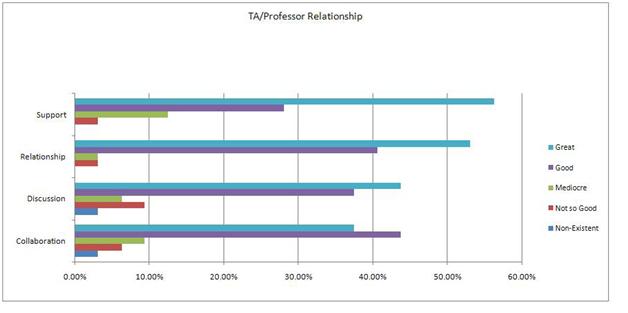
Figure 2: This graph represents the respondents' feelings about their relationship with the
professor for whom they TA. We asked them to rate their relationship based on four separate
categories: support received from professor, the overall relationship with the professor,
quality of discussion from the professor, and the collaboration with the professor.

Figure 3: This chart refers to Figure 2. It shows the specific percentage values for each
category.
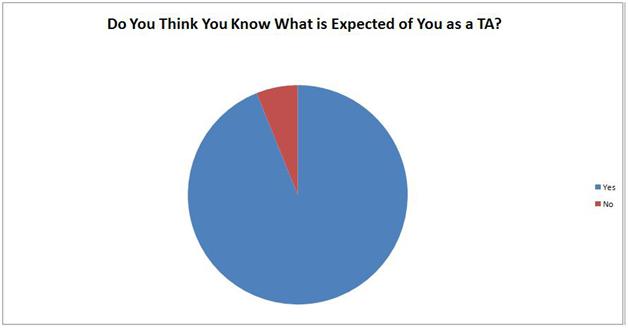
Figure 4: Clearly most TAs believe that they know what is expected of them as a TA.

Figure 5: The Chart for Figure 4. It shows specific percentage values for each response
option.
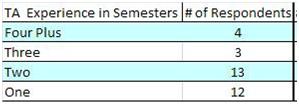
Figure 6: Chart displaying the amount of TA experience for each of the respondents
Although most of the TAs in our sample claim to know what is expected of them, only a
third of these same respondents have more than one academic year's worth of experience. Our
survey results display a concerning lack of retention within the TA community. This could
suggest a lack of support or that the TAs may not feel comfortable with (or really understand)
what is expected of them.
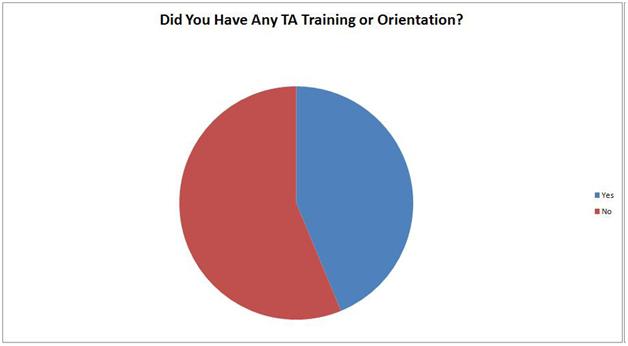
Figure 7: A little over half of the survey sample claims to have had some sort of training or
orientation.
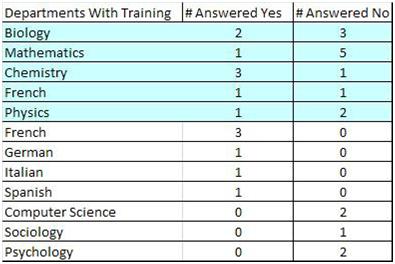
Figure 8: This chart shows how many students from each department claim to have received
TA training or orientation in some form.Clearly there are inconsistencies within departments.
Although more than half of the survey respondents claim to have received some sort of TA
training or orientation, it is clear in Figure 9 that only the language departments are consistent
with their training. The descriptions of the training that they experienced are varied ranging
from structured:
“ Training in methods of teaching foreign language with all other foreign language dept
TAs. Included using ‘new’ media, using body language to ask questions, and
constructive correctional methods.”
--German TA
“8-10 hours with the program director, learning about the PLI program, and running
practice PLI sessions”
--Chemistry TA
To mediocre:
"A 20-minute discussion with lab professor, an 1.5 hour lab safety presentation, a
"Intro Lab TA Primer" paper with helpful hints for In-Lab Ta's and graders."
--Physics TA
"Sat down with professor to figure things out."
-- Mathematics TA


